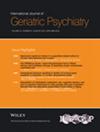Changes in the Disease Burden of Depressive Disorders Among Middle-Aged and Older Adults (Aged 45–89) in China Over 30 years: Insights From the Global Burden of Disease Study 2021
Abstract
Objectives
In China, depressive disorder (DD) among middle-aged and older adults is a significant public health concern. This research utilized the latest Global Burden of Disease Study (GBD) database to evaluate the evolving disease burden of DD in this demographic over the past 3 decades.
Methods
Data on the incidence and disability-adjusted life years (DALY) of DD among people aged 45–89 in China between 1992 and 2021 were collected from the GBD 2021. The age-period-cohort (APC) model was applied to determine the effects of age, period, and cohort on the incidence and DALY rates of DD.
Results
(1) Over the last 30 years, there was a 6.49% increase in the overall age-standardized incidence rate (ASIR) and a 3.99% increase in age-standardized DALY rates (ASDR) for DD among middle-aged and older adults in China, with females consistently exhibiting higher ASIR and ASDR than males. In 2020, COVID-19 significantly increased the ASIR and ASDR of DD in the population, especially in females. (2) The APC analysis revealed an annual net drift of 0.38% in incidence and 0.17% in DALY rate. For both genders, local drifts of incidence were negative for the 45–54 age group and positive for the 55–89 age group; DALY rates showed negative local drifts for the 45–59 age group and positive for the 60–89 age group. (3) Incidence and DALY rates increased with age, displaying a trend of initial decline followed by an increase in period effects, but a trend of initial increase followed by a decrease in cohort effects. Moreover, the impacts of age, period, and cohort exhibited gender differences.
Conclusions
Our findings provide a comprehensive and in-depth perspective for studying the changing trends of DD’s burden in China and for identifying targeted prevention and treatment policies for DD from different aspects.

 求助内容:
求助内容: 应助结果提醒方式:
应助结果提醒方式:


